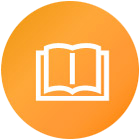Infinitive คือคำกริยา base form หรือกริยาช่องที่ 1 จะใช้ตามหลัง to แบ่งได้ 2 แบบคือ Infinitive with to และ Infinitive without to เป็นอีกหนึ่งแกรมม่าสำคัญที่ควรรู้ก่อนสอบโทอิค

Infinitive คืออะไร?
Infinitive คือ คำกริยารูปปกติ หรือคำกริยาช่อง 1 แบ่งเป็นสองประเภท คือ Infinitive with to และ Infinitive without to
Infinitive with to
Infinitive with to คือ คำกริยาช่อง 1 (Base Form) ที่ใช้ตามหลัง to เช่น to talk, to think, to sleep, to watch, to have
หน้าที่และการใช้ Infinitive with to
1. ทำหน้าที่เป็นคำนาม ใช้เป็นประธานของประโยค
ex. To listen English music is a good way to learn English.
(การฟังเพลงภาษาอังกฤษเป็นหนึ่งวิธีที่ดีในการเรียนภาษาอังกฤษ)
2. ใช้ตามหลังคำกริยาแท้ (Main Verb) ทำหน้าที่เป็นกรรมของประโยค
ex. Cony loves to play football.
(โคนี่ชอบการเล่นฟุตบอล)
3. ใช้ตามหลังคำคุณศัพท์ (Adjective) บางคำ ทำหน้าที่เป็นเหมือนคำกริยาวิเศษณ์ (Adverb) เพื่อเป็นการบอกเหตุผล
Adjective ที่มักตามหลังด้วย Infinitive with to
able anxious disappointed
due eager glad
happy keen likely
lucky pleased prepared
proud ready sad
surprised unable unhappy
unlikely unwilling willing
clever difficult easy
foolish hard impossible
kind nice possible
right silly wrong
ex. I’m proud to work with you
(ฉันภูมิใจที่ได้ทำงานกับคุณ)
ex. It was foolish of him to trespass against the law.
(มันเป็นความโง่ของเขา ที่ละเมิดกฎหมาย)
4. ใช้ตามหลังคำนามหรือสรรพนาม โดยทำหน้าที่เป็นเหมือนคำคุณศัพท์ (Adjective) ขยายคำนามหรือสรรพนามนั้น
ex. I have some jeans to wash.
(ฉันมีกางเกงยีนที่จะซัก)
ex. The Korean boy band to watch is BTS.
(บอยแบนด์เกาหลีที่ดูอยู่นี้คือวงบีทีเอส)
5. ใช้แสดงเป้าหมาย, วัตถุประสงค์ หรือใช้ในการตอบคำถาม ‘Why?’
ex. Prawit bought a gorgeous watch to give to his girlfriend.
(ประวิทย์ซื้อนาฬิกาสุดหรูเพื่อให้แก่แฟนสาวของเขา)
6. ใช้ตามหลังคำกริยา ในโครงสร้าง Subject + Verb + Infinitive with to
Verb ที่ตามหลังด้วย Infinitive with to
afford agree appear
arrange ask attempt
begin can’t bear can’t stand
care cease choose
claim continue decide
demand deserve determine
dread expect fail
forget get (be allowed to) happen
hate hesitate hope
hurry intend learn
like love manage
need neglect offer
plan prefer prepare
pretend promise propose
prove rail refuse
regret remember seem
start swear tend
threaten try vow
wait want wish
would like yearn
คำกริยาบางตัวตามด้วยกรรมตรง (Direct Objects) และ Infinitive with to ในโครงสร้าง Subject + Verb + Object + Infinitive with to
advise allow ask
cause challenge command
encourage expect force
get instruct intend
invite lead order
persuade remind teach
tell urge want
warn would like would prefer
ex. We agreed to work together.
(พวกเราตกลงทำงานด้วยกัน)
ex. I encouraged my sister to learn Japanese.
(ฉันสนับสนุนน้องสาวของฉันให้เรียนภาษาญี่ปุ่น)
7. ใช้ตามหลัง ought (ควรจะ), get used (เคยชิน) และ used (เคย)
ex. You ought to do this presentation by yourself.
(คุณควรจะทำพรีเซนต์นี้ด้วยตัวคุณเองนะ)
ex. They get used to live in country.
(พวกเขาเคยชินกับการอาศัยอยู่ในชนบท)
ex. I used to learn Italian 10 years ago.
(ฉันเคยเรียนภาษาอิตาลี 10 ปีมาแล้ว)
8. ใช้ Verb to be + Infinitive with to หรือ have + Infinitive with to ในความหมายว่า ต้อง... เมื่อต้องการออกคำสั่งหรือขอร้อง
ex. You are to go now.
(คุณต้องไปเดี๋ยวนี้)
ex. In France, you have to drive on the right.
(ในฝรั่งเศสคุณต้องขับรถทางขวา)
9. เมื่อทำเป็นรูปปฏิเสธ ให้เติม not ข้างหน้า to
ex. It’s better not to smoke.
(ไม่สูบบุหรี่มันจะดีกว่านะ)

Infinitive without to
Infinitive without to คือคำกริยาช่อง 1 ที่ไม่มี to นำหน้า
หน้าที่และการใช้ Infinitive without to
1. ทำหน้าที่เป็นคำกริยาหลัก (Main Verb) ใช้ตามหลังกริยาช่วย (Auxiliary Verb) verb to do หรือ Modal Verb (will, shall, would, should, can, could, may, might, must)
ex. Levi can play the guitar.
(รีไวสามารถเล่นกีตาร์ได้)
ex. I will go to London next week.
(ฉันจะไปลอนดอนสัปดาห์หน้า)
2. ใช้ตามหลังคำกริยาอื่น ๆ ทั่วไปหรือเรียกว่า Special Verb ที่มีกรรมตรง (Direct Object) และคำกริยาที่แสดงถึงการยินยอมหรือให้เหตุผล เช่น watch, see, feel, hear, help, let, make, see
ex. I watched them bake the bread.
(ฉันดูพวกเขาอบขนมปัง)
watch = Special Verb
bake = Infinitive without to
them – Direct Object
3. ใช้ตามหลังคำเหล่านี้ had better, need, dare, would rather, would sooner, rather than, but, and, or, except
ex. They had better be here before we start dinner.
(พวกเขาควรอยู่ที่นี่จะดีกว่าก่อนที่พวกเราจะเริ่มดินเนอร์)
be = Infinitive without to
คอร์สแนะนำ
2 คอร์สติวโทอิคออนไลน์จากครูพี่อิ๋ง ผู้สอบได้คะแนนเต็ม TOEIC 990 ที่จะตอบโจทย์ให้ได้ตามต้องการ ทั้งคนที่ต้องการสอบเพื่ออัปคะแนนสามารถเลือกคอร์สเน้นทักษะที่พลาดเป้าไปในครั้งก่อน หรือจะเรียนทั้ง 2 คอร์สเพื่อย้ำให้มั่นใจพร้อมคว้าคะแนน 800+ ส่วนคนที่สอบครั้งแรกแนะนำให้เลือกติวทั้ง 2 คอร์ส
TOEIC Reading 400+ by ครูพี่อิ๋ง >> คลิกที่นี่

- ปูพื้นฐานแกรมม่าเน้น ๆ ที่เจอในข้อสอบชัวร์ ๆ ให้แน่นปึก
- แนะนำเทคนิคการอ่านโจทย์แบบไม่เสียเวลา อ่านปุ๊บเจอคำตอบปั๊บ
- ฝึกทำโจทย์ข้อสอบเสมือนจริง พร้อมเฉลยละเอียดทุกข้อ
- มีเอกสารประกอบการเรียน (PDF) ให้ดาวน์โหลด
- สะดวกสบาย เรียนออนไลน์ที่ไหนก็ได้ ทุกที่ทุกเวลา
- จัดสรรเวลาเรียนได้ตามต้องการ
TOEIC Listening 400+ by ครูพี่อิ๋ง >> คลิกที่นี่

- แนะนำเคล็ดลับการฟังแต่ละพาร์ท เทคนิคฟังได้ตรงประเด็นกับโจทย์ต้องการ
- มีแบบฝึกหัดให้ฝึกฟังจนชินหู
- ฝึกทำโจทย์ข้อสอบเสมือนจริง พร้อมเฉลยละเอียดทุกข้อ
- มีเอกสารประกอบการเรียน (PDF) ให้ดาวน์โหลด
- สะดวกสบาย เรียนออนไลน์ที่ไหนก็ได้ ทุกที่ทุกเวลา
- จัดสรรเวลาเรียนได้ตามต้องการ
ที่มาข้อมูล
- https://www.trueplookpanya.com/knowledge/language/english
- http://www.grammar-monster.com/
- https://www.englishgrammar.org/
- https://www.softschools.com/

















